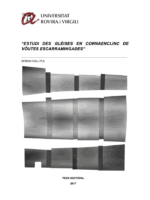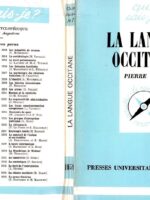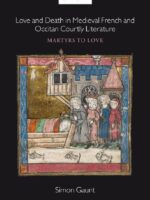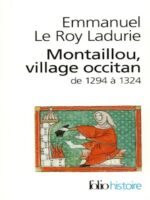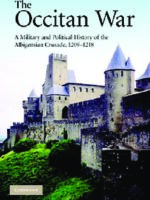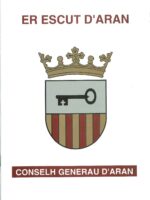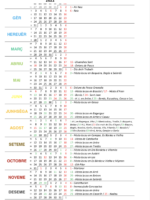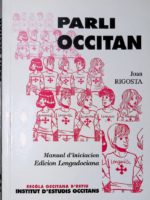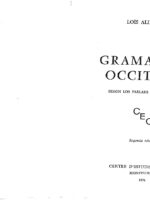Recommended Books
-
Estudi des glèises en cornaenclinc de vòutes escarramingades
0,00 €Era Val d’Aran se place ena cara Nord des Pirenèus. Es sues caracteristiques geografiques e climatiques, atau coma era sua orientacion cap ar Atlantic an condicionat ath long dera istoria toti es factors dera societat entre eri era arquitectura e era construccion. Aguest ei un des principaus motius entà qu’era sua arquitectura age agut ua difusion escassa. Siguec a compdar deth torisme pirenenc provinent de França que siguec coneishuda. Violet le Duc, Elies Rogent, Puig i Cadafalch, Domenech i Monater e Basegoda Nonell son autors que posterioramente realizen aportacions scientifiques subergessentes.
Era presenta investigacion se plantege en contèxte dera assignatura de Construccion VI dera Escola d’Arquitectura de Reus dera Universitat Rovira i Virgili. Es trabalhs practics des alumnes suscitèren er interès ena generacion dera informacion damb metodes de captura massiva de donades coma er escanèr lasèr. Es campanhes d’escaneg lasèr se realizen en totes es glèises dera Val d’Aran, en tot hèr-ne un totau de 43 e sonque se prescindís der escaneg dera glèisa de Baqueira e dera glèisa consagrada de Mijaran. Autant ua coma era auta son de recenta construccion.
Aguesta Tèsi Doctorau se centre en estudi des glèises deth prumèr romanic segontes era classificacion d’Emmanuel Garland. Ei vertat qu’autors coma Puig i Cadafalch heren a conéisher e descriueren quauques glèises, principaument es glèises basilicaus. Ua des caracteristiques mès importantes dera arquitectura romanica ei er us de voutes. Puig i Cadafalch e Basegoda Nonell sagèren d’explicar era sua origina e forma.
Un prumèr objectiu ei eth de generar ua documentacion planimetrica, realizada a compdar de bromes de punts que complemente era ja realizada per Domenech i Montaner, Puig i Cadafalch e Bassegoda Nonell.
Un dusau objectiu consistís en estudi des construcciones prescientifiques. Aguestes plantegen un especiau interès entà determinar quines son es principis en qué se basauen es constructors des edificis romanics. Es obres de fabrica dera Val son absoludament deformables e formarien part d’aguest grop de construcciones damb aguesta fenomenologia caracteristica. Es glèises romaniques dera Val d’Aran son un conjunt unitari d’edificis qu’an estat poc alteradi ath long dera istoria.
Es resultats mostren dues tipologies d’edificis qu’atien a principis geometrics e d’estabilitat plan diferenti. Tanben mostre era viabilitat deth metode seguit entar estudi des assetaments e esbauçaments en tot èster d’utilitat tanben entà cimentar es bases entà obtier critèris de simplificacion que permeterà estudis damb elements finits. -
La langue occitane
0,00 €La langue d’oc ou occitan représente, à coté du catalan, du français, du francoprovencal, du castillan, [.] une des grandes langues romanes ou néo-latines qui se sont développées a partir d’une symbiose entre le latin populaire.
Pierre Bec ei professeur à l’Université de Poitiers, ancien Président de l’Institut d’Etudes Occitanes, ancien Directeur du Centre d’Etudes Supérieures de Civilisation Médiévale.
-
Love and Death in Medieval French and Occitan Courtly Literature: Martyrs to Love
0,00 €Some of medieval culture’s most arresting images and stories inextricably associate love and death. Thus the troubadour Jaufre Rudel dies in the arms of the countess of Tripoli, having loved her from afar without ever having seen her. Or in Marie de France’s Chevrefoil, Tristan and Iseult’s fatal love is hauntingly symbolized by the fatally entwined honeysuckle and hazel. And who could forget the ethereal spectacle of the Damoisele of Escalot’s body carried to Camelot on a supernatural funerary boat with a letter on her breast explaining how her unrequited love for Lancelot killed her? Medieval literature is fascinated with the idea that love may be a fatal affliction. Indeed, it is frequently suggested that true love requires sacrifice, that you must be ready to die for, from, and in love. Love, in other words, is represented, sometimes explicitly, as a form of martyrdom, a notion that is repeatedly reinforced by courtly literature’s borrowing of religious vocabulary and imagery. The paradigm of the martyr to love has of course remained compelling in the early modern and modern period.
This book seeks to explore what is at stake in medieval literature’s preoccupation with love’s martyrdom. Informed by modern theoretical approaches, particularly Lacanian psychoanalysis and Jacques Derrida’s work on ethics, it offers new readings of a wide range of French and Occitan courtly texts from the twelfth and thirteenth centuries, and argues that a new secular ethics of desire emerges from courtly literature because of its fascination with death. This book also examines the interplay between lyric and romance in courtly literary culture and shows how courtly literature’s predilection for sacrificial desire imposes a repressive sex-gender system that may then be subverted by fictional women and queers who either fail to die on cue, or who die in troublesome and disruptive ways.
-
Montaillou, village occitan de 1294 à 1324
0,00 €Montaillou: un petit village de montagnards et de bergers en haute Auriège, à 1 300 mètres d’altitude. En 1320, Jacques Fournier, évêque de Pamiers, plus tard pape d’Avignon, y déploie ses talents d’inquisiteur. Il finit par déterrer tous les secrets du village.
Rien n’échappe à cet évêque fureteur, ni les vies intimes, ni les drames de l’existence quotidienne.
En s’appuyant sur cet extraordinaire document de Jacques Fournier, sorte de roman vrai du petit peuple du XIV siècle, Emmanuel Le Roy Ladurie ressuscite, en utilisant les méthodes historiques et ethnographiques les plus actuelles, la réalité occitane et cathare d’il y a six cent cinquante ans.
-
The Occitan War: A military and political history of the albigensian crusade (1209-1218)
0,00 €In 1209 Simon of Montfort led a war against the Cathars of Languedoc after Pope Innocent III preached a crusade condemning them as heretics. The suppression of heresy became a pretext for a vicious war that remains largely unstudied as a military conflict. Laurence Marvin here examines the Albigensian Crusade as military and political history rather than religious history, and traces these dimensions of the conflict through to Montfort’s death in 1218. He shows how Montfort experienced military success in spite of a hostile populace, impossible military targets, armies that dissolved every forty days, and a pope who often failed to support the crusade morally or financially. He also discusses the supposed brutality of the war, why the inhabitants were for so long unsuccessful at defending themselves against it, and its impact on Occitania. This original account will appeal to scholars of medieval France, the Crusades, and medieval military history.
LAURENCE W. MARVIN is Associate Professor of History at the Evans School of Humanities, Berry College, Georgia.
-
Er escut d’Aran
0,00 €Aran ath long dera sua millenària existéncia a anat configurant ua simbologia pròpia, uns senhaus d’identitat, ua istòria e un patrimòni d’identificacion collectiua.
Auem er escut qu’ei reflèxe e expression dea nòsta istòria. Sintèssis de toti es elements: Lengua, Istòria, Art, Territòri e Volentat collectiua; Diuersitat e convivéncia. Er escut sintetise toti aguesti element d’arraötz popular e eth pòble les identifique coma pròpis.
Angel Claveria a sabut articular tot eth contengut simbolic en aguestes quate planes, Mos cau emplegar e mantier es simbèus entà permanéisher coma pòble.

